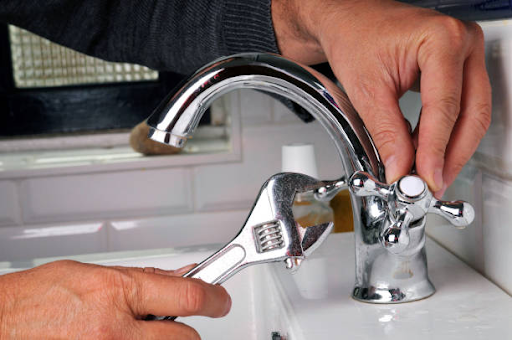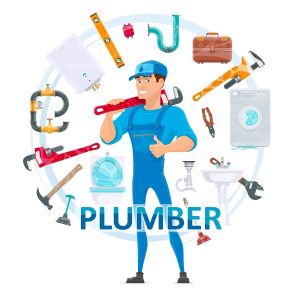Ensuring you know how to shut off your water supply is a crucial skill that can prevent damage to your home and save water in the event of leaks or other emergencies. This comprehensive guide explores the methods and steps involved in shutting off your water supply, backed by reliable data and expert analysis.
Introduction
The water supply system plays a pivotal role in every household, delivering clean water for drinking, cooking, and sanitation. Knowing how to shut off your water supply not only helps during maintenance or emergencies but also contributes to water conservation efforts. In this guide, we will delve into the key aspects of shutting off the water supply, covering various methods, tools, and scenarios.
1. Understanding Your Water Supply System
Before attempting to shut off your water supply, it’s essential to understand how your home’s plumbing system works. Your plumbing system is connected to the municipal water supply and is designed to distribute water throughout your home efficiently. Key components include:
- Main Water Shut-Off Valve
- Water Meter
- Individual Appliance Valves
- Water Heater Valve
2. Identifying the Main Water Shut-Off Valve
The main shut-off valve is critical for controlling the entire water supply to your household. It is usually located where the main water line enters your house. Common locations include:
- Basement
- Crawl space
- Garage
- Outside, near the foundation wall
According to the American Water Works Association, knowing the location of your shut-off valve can significantly reduce damage from a water emergency.
3. Interior vs. Exterior Shut-Off Valves
Homes often have both interior and exterior shut-off valves. The exterior valve is typically used by utilities to control water for an entire residence, while the interior valve provides homeowners control during maintenance.
| Interior Valves | Exterior Valves |
| Mainly for individual household use | Controlled by municipal services |
| More accessible for quick responses | Accessible by utility workers |
4. Step-by-Step Guide to Shutting Off Your Water Supply
Whether handling a leak or prepping for repairs, follow these steps:
- Locate the main shut-off valve.
- Turn the valve clockwise to stop water flow.
- Open a faucet to relieve pressure and drain remaining water.
- Verify the water is fully shut off by checking different faucets.
5. Shutting Off Water for Individual Appliances
In some cases, you may only need to shut off water for specific appliances. This can be managed using individual shut-off valves located near appliances like toilets, sinks, and washing machines. Turning these valves clockwise will stop water to that appliance without affecting the rest of the home.
6. Common Challenges and Solutions
Some challenges might arise during this process, such as:
- Difficult-to-turn valves: Apply a small amount of lubricant or use a wrench if necessary.
- Leaking valves: Contact a professional plumber to replace faulty valves. You can learn more about plumbing services available here.
7. Tools and Safety Equipment
Essential tools include wrenches, pliers, and utility gloves. These tools aid in ensuring the valves are turned efficiently and safely. According to the National Safety Council, proper equipment can prevent injuries during home repairs.
8. Importance of Regular Maintenance
Routine checks and maintenance can prevent unexpected issues from arising. Secure each shut-off valve and inspect them annually to ensure proper function, reducing chances of emergencies. Regular maintenance is emphasized in guides by nationally recognized plumbing services like Franklin Plumbing.
9. Emergency Preparedness
Have an emergency plan that includes your home’s water shut-off locations and instructions. This plan should be communicated with family members and kept in an easily accessible location.
10. Hiring a Professional
If unsure about handling the water supply shut-off, hiring a professional plumber can ensure the job is done safely and correctly. For projects in Torquay, you can find professional plumbers here.
Key Takeaways
- Knowing how to locate and operate your home’s main shut-off valve is crucial.
- Routine inspection and maintenance prevent potential water emergencies.
- Having a clear emergency plan can minimize damage during crises.
- Professional plumbers are resources for complex plumbing issues.
Frequently Asked Questions (FAQs)
What should I do if I can’t find the main water shut-off valve?
If you’re unable to locate the main water shut-off valve, check the common locations such as the basement, crawl space, or garage. If these locations yield no results, consult your home’s layout diagram, or contact a local plumbing service for assistance. Missing valves in older homes might require professional installation.
Is it safe to shut off the water supply myself?
Yes, it is generally safe to shut off your water supply, provided you follow guidelines carefully and ensure familiarity with your plumbing layout. However, if you face resistance or issues with valves, avoid using excessive force and consider seeking professional help to avoid damage or injury.
How often should I check my water shut-off valves?
A yearly inspection of your water shut-off valves is recommended to ensure they function correctly. Regular checks can prevent rust and corrosion, facilitating ease of use during emergencies and maintenance.
Why is it important to know how to shut off my water supply?
Understanding how to shut off your water supply is essential for quickly stopping leaks and protecting your home from damage. It also helps in undertaking safe plumbing repairs and contributes to water conservation by reducing wastage during leaks.
Can I turn off the water supply for just one appliance?
Yes, individual shut-off valves are typically provided for major appliances like sinks, toilets, and water heaters. Turning these valves clockwise will stop the water supply to the specific fixture without affecting the entire household’s water supply.
Conclusion
Being proficient in shutting off your water supply is a vital skill for preventing water damage and maintaining an efficient household. With the right knowledge, tools, and resources, you can handle plumbing emergencies effectively or engage trusted plumbing services when necessary. For further assistance with plumbing needs, visit Franklin Plumbing for expert advice and support.
Contact Us
If you require further guidance or need professional plumbing assistance, do not hesitate to reach out to reputable local services. Expert plumbers are available to help with inspections, maintenance, and emergency responses, ensuring your home remains safe and secure.


